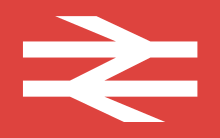Big changes are ahead for rail service in Britain, and passengers hope they will be positive ones, with rationalized schedules, modernized fare structures and, at long last, a single authority to point the finger of blame at if the current issues of service and cost aren't solved.
A new organization, Great British Railways, with an independent board, will take over Network Rail (which owns the lines and stations), National Rail (which coordinates tickets and schedules among the various private operators) and the train services themselves.
But, despite some discussion months ago, it will not be a return to the fully-nationalized post World-War II era of British Rail as a government owned-and-operated network, the new entity will contract with some of the 28 train operating companies to operate the trains, at least for now. It is a system similar to that used by Transport for London to manage Overground and Docklands Light Railway.
 It's not yet clear whether the new system will adopt a common color scheme and branding or allow the operators to continue with their own, but one thing is certain: the British Rail logo, now printed on tickets and used as a generic symbol for rail stations, will take a more prominent role again. Originally conceived as representing rail traffic moving in two directions, it's been derided by some as 'the arrow of indecision.'
It's not yet clear whether the new system will adopt a common color scheme and branding or allow the operators to continue with their own, but one thing is certain: the British Rail logo, now printed on tickets and used as a generic symbol for rail stations, will take a more prominent role again. Originally conceived as representing rail traffic moving in two directions, it's been derided by some as 'the arrow of indecision.'
Separating ownership of the rails and stations from operation of trains was originally seen as opening the way for competing train companies to enter the market; that's happened slowly in some parts of Europe, but not in the UK. What it has led to is train operators blaming problems on infrastructure and vice versa.


Comments (0)